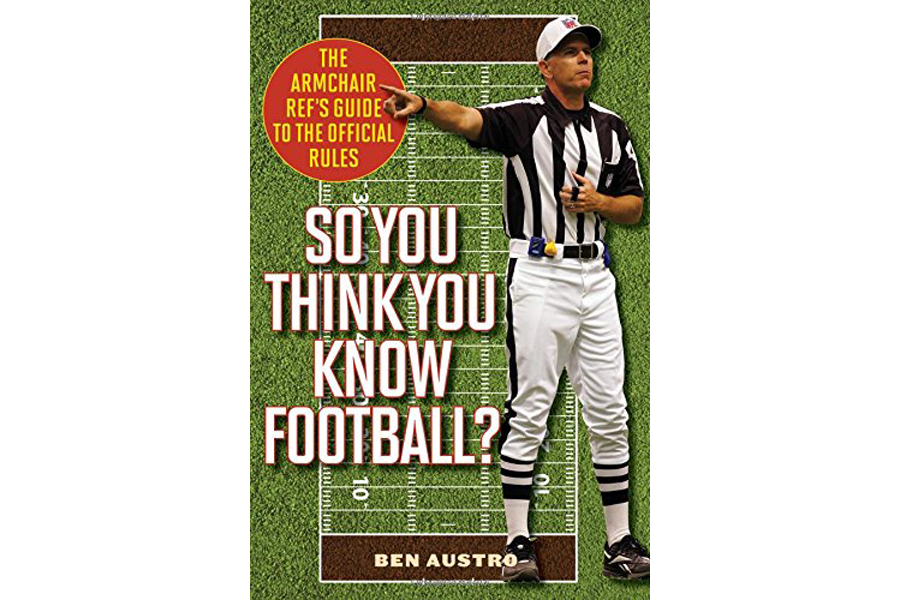Is it any wonder why some NFL telecasts now bring in former referees and rules experts to explain the details and complexities of calls on the field? It’s not easy even for the broadcasters to know the NFL rulebook cold, and certainly even serious fans welcome an opportunity to expand their knowledge of the rules, how they came be, and learn from case studies from actual games. Ben Austro delivers this in his armchair guide to NFL rules, which draws on his work as founder and editor of Football Zebras, a website dedicated to rule interpretations. A sampling of the topics covered: what constitutes a legal and illegal formation, intentional grounding, fair catches, and the perplexing “ten second runoff.”
Here’s an excerpt from So You Think You Know Football:
“In the cavernous Los Angeles Coliseum, the Rams unveiled a unique field goal blocking tactic when the Bears visited on October 30, 1955. As George Blanda was about to attempt a field goal, Blanda saw Rams safety Don ‘the Blade’ Burroughs looming much taller than the 6-foot-4 in the game program. Burroughs was standing on defensive tackle Eugene ‘Big Daddy’ Lipscomb, listed as 6-foot-7, as Lipscomb held Burroughs’s feet at waist level. Blanda’s kick was unaffected by the wobbling tower of Burroughs and Lipscomb, and the field goal was good.
“Is this a legal play?
“At the time, the play was legal, despite being outlawed in the college game after Oregon State University attempted a self-illustratively named pyramid play in 1933. It is now prohibited under multiple provisions of the unsportsmanlike conduct rule, which include jumping or standing on a teammate or opponent and picking up a teammate in order to block a kick.”







